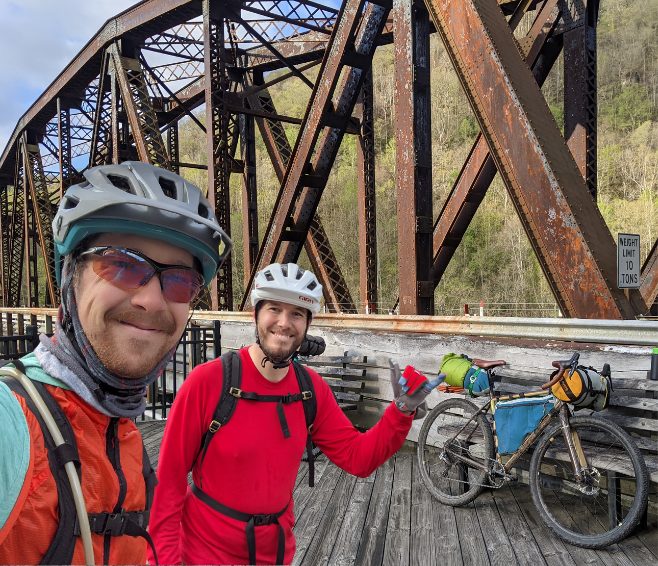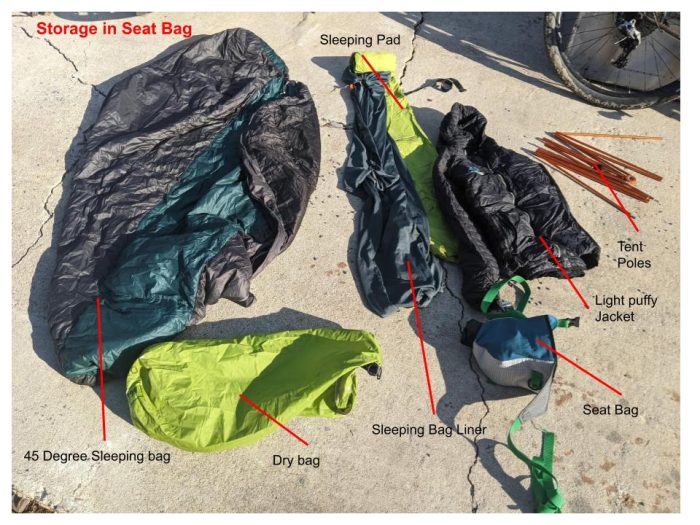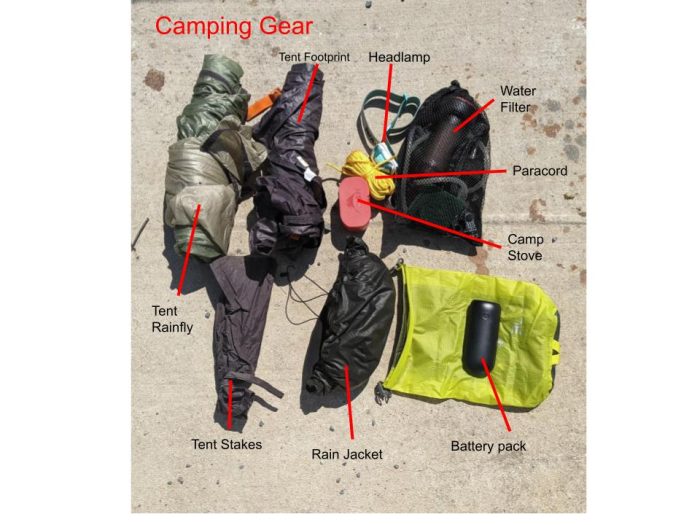Bikepacking 101
January 10, 2022
Written by Travis Brown

My favorite way to enjoy the outdoors is by combining the activities that I love. Bikepacking is an activity that can be done all over the place and take you to areas off the beaten path. In this blog, we will talk about what kind of bike to use, how to store all your gear, what gear to bring and some tips for planning your first trip.
The Bike
There are many considerations for what type of bike you want to use for bikepacking. Look at the route that you want to ride and select a bike best suited for the terrain. Most often, folks will bikepack on mountain bikes with front suspension (hardtails) or bikes with no suspension (rigid). The simplicity of these frames provides the largest storage area for the gear. Full-suspension bikes aren’t used as frequently because the small space in the frame limits the amount of storage space and the tendency for bikepacking routes to be tamer than dedicated singletracks. Having said that, don’t let the fact that you only have a full-suspension bike stop you from trying out bikepacking. When deciding between drop handlebars or flat handlebars on your bike, determine how much of the route will be on rugged singletracks versus gravel roads. Gravel roads and easy singletracks don’t require the amount of control that is provided by flat bars so drop bars can be a great option, too.
The Bags
There are three main places to carry gear on your bike – the handlebars, the frame, and under the seat. A lot of manufacturers have specific bags for these spaces and there are many ways to be creative and save money. One benefit of carrying gear in this way is that it keeps the weight of your gear closer to the center of your bike, adding stability. When using a rear rack with panniers the weight is further away from the center bike making it less stable on technical terrain.

Sleeping systems
Getting a good night’s sleep is important when you are looking to cover a lot of miles. A good bikepacking sleeping system looks very similar to that of a backpacking setup. A sleeping pad that is compact, lightweight and comfortable is essential. There are a lot of sleeping pads that roll up smaller than a Nalgene water bottle. For your first bikepacking excursion, it’s best to go when the temperature is relatively warm so you don’t have to bring a big sleeping bag to stay warm. A summer weight bag or some sort of quilt system will compact and easily fit on your handlebars or in your seat bag. A lot of people will use a Bivy Bag, which is basically a rain jacket for your sleeping bag. This can be a compact and lightweight way to be protected from the elements. It does not provide as much comfort or protection as a tent but if space is a factor, it is worth looking at!

Clothing
Taking time to consider what clothes to bring and where to pack them on your bike can lead to a more comfortable and efficient ride. Always plan to dress in layers that are easy to modify. Test out the layers that you regularly ride with to dial in your system. Over a long day, it will be really nice to have easy access to some warm layers. Whether you are stopping for lunch or arriving at your camp, it can be nice to throw a layer on as your body cools down from riding. The layering concepts that are outlined in our Cold Weather Cycling blog can help you understand what it takes to dial in your riding attire.

Food and Water
It’s best to plan to have meals that only require water. Premade backpacking meals can be easy options or you can dehydrate some meals on your own. A lightweight backpacking stove will be a good option for this. The goal is to have a system that is compact and efficient.
Bring a lot of high-calorie snacks for your ride that are accessible like energy bars, trail mix and even candy bars. Being able to easily access them will encourage you to eat more. Keeping your body fueled will not only help you maintain progress but can also help you have a better time while riding. “Bonking” or totally running out of energy is a rough experience, especially when knowing there are more miles to cover. Keep those energy levels up with regular snacking.
Research the route that you are riding and see if there are spots that you can get water from. Depending on your route, you may be able to rely on stores or friends to refill your water. If you are getting off the beaten path, bringing a water filter or other ways to get clean water may be needed. It’s always a good idea to have the gear you need to get water in an emergency even if you plan to refill in towns. This could be boiling water with your stove or having water purification tablets.

The First Trip
When planning your first bikepacking trip it’s best to think of it as a test trip. Keep the distance relatively short and try out a single overnight first. This could be anywhere between 5-30 miles one way. This will give you a chance to test out the systems you have. You will learn where your gear fits best in your bags, how much ground you can expect to cover while fully loaded, and if your bags need any extra support to stay secure while riding. Around the New River Gorge, there are so many overnight options for backpacking trips
This blog is just a starting point for figuring out how you can bring bikepacking into your life. Every rider will need to figure out what works best for them. There are so many additional resources for how to get set up to bikepack and some of them offer creative DIY solutions so you don’t need to buy every single bag for your first trip. Ride your bike, test your gear and go explore!
